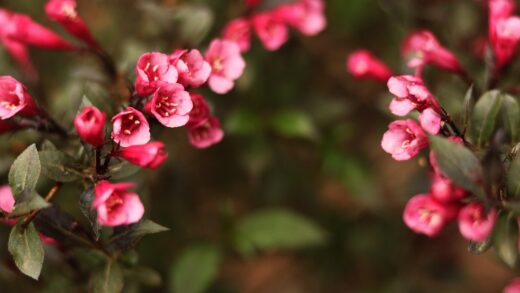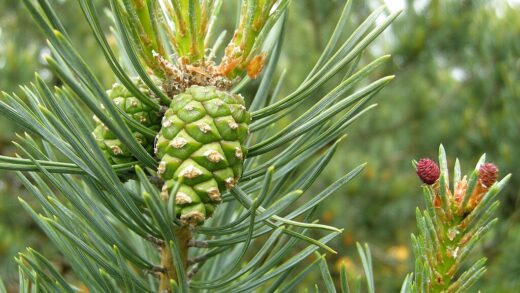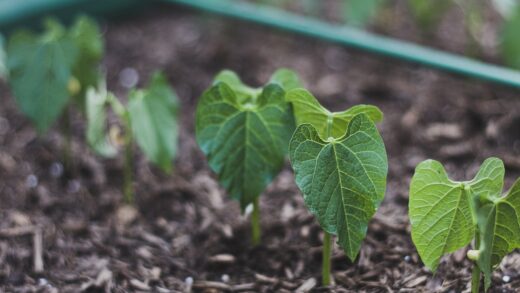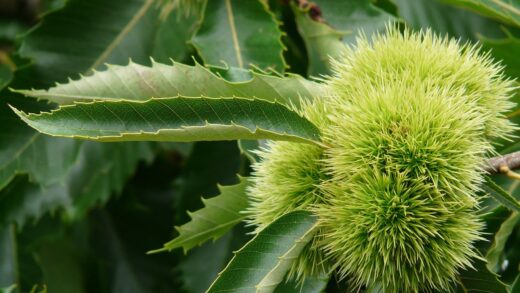Alpine heath, known botanically as Erica carnea, is a remarkably resilient and rewarding plant for any garden, offering a splash of color during the bleakest months of late winter and early spring. Its ability to thrive in a range of conditions, including alkaline soils that are unsuitable for most other heathers, makes it a versatile choice for gardeners. Proper care is not overly demanding, yet understanding its specific needs regarding soil, location, and maintenance is crucial for ensuring vigorous growth and a profusion of its characteristic urn-shaped flowers. This plant’s value extends beyond its winter blooms; its evergreen, needle-like foliage provides year-round texture and structure, making it an indispensable component of rock gardens, borders, and groundcover schemes. By mastering the fundamentals of its care, you can unlock the full potential of this exceptional alpine native.
Cultivating a thriving alpine heath begins long before the plant is even in the ground, with the careful preparation of its future home. The soil is the foundation of its health, and while Erica carnea is notably tolerant of a wider pH range than its acid-loving relatives, it performs best in well-drained, slightly acidic to neutral soil. Poor drainage is the single most significant threat to its survival, as the plant is highly susceptible to root rot in waterlogged conditions. Amending heavy clay soils with generous amounts of organic matter, such as compost or leaf mold, and coarse sand or grit is not just recommended, it is essential for improving soil structure and aeration. This initial investment of effort pays dividends in the long-term vitality of the plant.
The success of alpine heath also hinges on selecting an appropriate location within the garden that mimics its native mountainous habitat. This species craves full sun to produce the most abundant flowers and maintain a dense, compact form; in shadier spots, it can become leggy and sparse. An open, sunny position also promotes good air circulation, which is vital for preventing the development of fungal diseases that can plague the plant in damp, stagnant conditions. Consider its placement in relation to other plants, as it works beautifully as a low-growing carpet at the front of borders, cascading over rock walls, or massed as a weed-suppressing groundcover on a sunny slope.
Ongoing maintenance throughout the year is straightforward but essential for keeping alpine heath looking its best. The most critical task is pruning, which should be done annually immediately after the flowering period has finished in late spring. This involves shearing back the faded flower stems to just below the old blooms, which encourages bushy growth and prevents the plant from becoming woody and bare in the center. During prolonged dry spells, especially in the first year after planting, supplemental watering may be necessary to help the root system establish. However, once established, Erica carnea is remarkably drought-tolerant, requiring minimal intervention.
Soil composition and preparation
The unique adaptability of alpine heath to a broader soil pH spectrum sets it apart from other members of the Ericaceae family. While most heaths and heathers demand acidic conditions, Erica carnea flourishes in soils ranging from acidic to slightly alkaline, with a pH up to 7.5. This tolerance makes it an invaluable option for gardeners whose soil is naturally neutral or contains chalk or limestone. However, this flexibility does not mean that soil structure can be ignored; in fact, excellent drainage remains the most critical factor for its success. The plant’s fine root system cannot withstand being saturated for extended periods, making heavy, compacted clay a significant challenge to overcome.
More articles on this topic
Preparing the planting bed is a crucial step that directly impacts the long-term health and vigor of the plant. Before planting, the soil should be thoroughly cultivated to a depth of at least 30 centimeters to loosen any compaction. For dense, clay-based soils, the incorporation of substantial amounts of organic material is non-negotiable. Well-rotted compost, leaf mold, or composted bark will improve the soil’s friability and structure, while adding coarse horticultural grit or sand will create the necessary channels for water to drain away freely from the root zone. This preparation ensures that the roots have access to both oxygen and moisture without becoming waterlogged.
In naturally sandy or loamy soils, preparation is less intensive but still beneficial for optimizing growing conditions. Even in these soil types, adding a moderate amount of organic matter will help with moisture retention during dry periods and provide a slow release of essential nutrients. It is important to mix any amendments in thoroughly with the existing soil rather than creating a pocket of improved soil just in the planting hole. This encourages the roots to grow outwards into the surrounding earth, establishing a stronger and more resilient plant that is better able to withstand environmental stresses.
Ultimately, the goal of soil preparation is to create a growing medium that is loose, friable, and free-draining, yet capable of retaining enough moisture to support the plant. A simple test for drainage is to dig a hole and fill it with water; if the water has not drained away within a few hours, the drainage is inadequate and requires further amendment. Taking the time to properly assess and prepare the soil before planting is the most effective way to prevent future problems and ensure your alpine heath thrives for years to come.
Optimal location and environmental factors
Choosing the right spot for planting is as vital as preparing the soil, and for alpine heath, the primary requirement is abundant sunlight. This plant has evolved in open, mountainous environments and requires at least six hours of direct sunlight each day to achieve its full potential. A sun-drenched location ensures a prolific display of flowers, intensifies the foliage color of certain cultivars, and helps maintain a dense, mounding habit. Plants grown in partial shade will often survive, but they tend to become sparse, with weaker stems and significantly fewer blooms, ultimately failing to provide the impressive visual impact for which they are known.
More articles on this topic
Good air circulation is another critical environmental factor that should not be overlooked when siting your alpine heath. Planting in an open area where air can move freely around the foliage helps to keep the leaves dry and reduces the risk of fungal diseases, such as botrytis, which can thrive in damp, still conditions. Avoid planting in crowded beds where airflow is restricted by larger, overhanging plants or in enclosed courtyards with poor ventilation. A position on a gentle slope or in a raised bed can be ideal, as it naturally promotes both excellent drainage and superior air movement.
When considering its place in a garden design, alpine heath serves multiple functions exceptionally well. Its low, spreading nature makes it a perfect choice for the front of a border, where it can soften hard edges and provide a continuous mat of color and texture. It is also a classic component of rock gardens, where its fine-textured foliage and delicate flowers provide a beautiful contrast to the ruggedness of stone. For larger areas, mass planting Erica carnea creates a stunning, low-maintenance groundcover that effectively suppresses weeds once established, offering a four-season tapestry of interest.
Companion planting can further enhance the beauty of alpine heath and create a cohesive garden scene. It pairs wonderfully with other low-growing, sun-loving plants such as dwarf conifers, which provide contrasting form and year-round structure. Spring-flowering bulbs like crocuses, scillas, and species tulips can be planted amongst the heath, emerging through its foliage to create a layered and dynamic display. The key is to choose companions that share similar requirements for sun and well-drained soil, ensuring all plants in the grouping can thrive together without competition.
Ongoing maintenance throughout the seasons
Seasonal care for alpine heath follows a simple and predictable rhythm, ensuring the plant remains healthy and attractive throughout the year. As winter recedes and the vibrant blooms of the heath begin to fade in late spring, the most important annual task arrives: pruning. This is not a task to be skipped, as it is fundamental to the plant’s long-term shape and flowering capacity. Shearing the plant lightly immediately after the last flowers have dropped encourages the development of new growth, which will carry the following year’s blooms. It also prevents the plant from developing a woody, open center, maintaining its desirable dense, cushion-like form.
During the summer months, established alpine heath is impressively self-sufficient and requires very little intervention. Its origins in well-drained, rocky slopes have made it quite tolerant of dry conditions, so supplemental watering is rarely necessary except during unusually severe or prolonged droughts. For newly planted specimens, however, regular watering during their first summer is crucial to help them establish a deep and extensive root system. A layer of organic mulch, such as composted bark chips or pine needles, can be beneficial in conserving soil moisture and keeping the root zone cool, although care should be taken to keep the mulch from being piled up against the plant’s stems.
As autumn approaches, the primary focus of maintenance shifts to preparation for the coming winter. This is a good time to gently weed around the plants to reduce competition for resources and ensure the area is tidy. It is also an opportunity to assess the plant’s health and remove any dead or damaged stems that may have appeared over the growing season. No further pruning should be done at this time, as any new growth stimulated by late-season cutting would be tender and susceptible to frost damage. The flower buds for the winter display are already set, and the plant should be allowed to enter dormancy undisturbed.
Winter is when alpine heath truly comes into its own, providing invaluable color and interest when most of the garden is dormant. During this season, maintenance is minimal to non-existent. The plant is exceptionally hardy and can withstand snow and frost without protection in most climates. In fact, a blanket of snow can act as a protective insulator against harsh winds and extreme temperature fluctuations. The main task for the gardener is simply to enjoy the display of pink, purple, or white flowers against the backdrop of its evergreen foliage, a welcome sight on even the coldest of winter days.
Special considerations for container cultivation
Growing alpine heath in containers is an excellent way to enjoy its winter charm on patios, balconies, or in courtyards where in-ground planting is not possible. The key to success in pots lies in selecting the right container and providing an appropriate growing medium. The container must have ample drainage holes to prevent waterlogging, which is even more of a risk in a confined space than in the open garden. Terracotta pots are a good choice as their porous nature allows the soil to breathe and dry out more quickly, though any material is suitable as long as drainage is guaranteed. Choose a pot that is proportional to the plant’s size, allowing some room for growth but not so large that the soil stays wet for too long.
The potting mix for container-grown Erica carnea must be exceptionally well-draining. A standard multipurpose compost is often too dense and moisture-retentive on its own and should be amended to better suit the plant’s needs. An ideal mix can be created by combining equal parts of a loam-based compost, such as John Innes No. 2, with horticultural grit or perlite. This mixture provides adequate nutrients and stability while ensuring that excess water can drain away freely, protecting the sensitive roots from rot. Never place a layer of gravel at the bottom of the pot, as this old practice has been shown to impede drainage rather than improve it.
Watering is the most critical aspect of care for potted alpine heath and requires more frequent attention than for garden-grown plants. The limited volume of soil in a container can dry out quickly, especially during windy or sunny periods, even in winter. Check the moisture level regularly by touching the soil; when the top inch or two feels dry, it is time to water thoroughly until it runs out of the drainage holes. It is important to avoid both extremes: do not let the root ball dry out completely, but also do not allow the pot to stand in a saucer of water for any length of time.
Container-grown plants also have different feeding and overwintering requirements. The nutrients in potting soil are finite and will be depleted over time, so a light application of a slow-release, balanced fertilizer in the spring can be beneficial. Unlike their counterparts in the ground, potted heaths are more vulnerable to freezing temperatures because their roots are not insulated by the earth. In very cold climates, it may be necessary to protect the pot by wrapping it in bubble wrap or hessian, or by moving it to a more sheltered location, such as against the wall of the house, to prevent the root ball from freezing solid.
Long-term health and rejuvenation
Maintaining the long-term health and vitality of alpine heath involves more than just routine seasonal care; it requires an understanding of the plant’s life cycle and how to respond to signs of aging. Over many years, even with regular pruning, an Erica carnea plant can start to become overly woody and less productive in its flowering. You may notice the center of the plant opening up, with bare, gnarled stems becoming more prominent and new growth appearing only at the tips. This is a natural aging process, but it can be managed and even reversed to some extent through careful rejuvenation techniques.
When a plant begins to show significant signs of decline and woodiness, a more drastic form of pruning may be considered, though it comes with risks. This involves cutting the plant back harder than the usual post-flowering shear, trimming it back into older wood to stimulate new growth from the base. However, this should be done with caution, as cutting back too far into old, bare wood that has no visible growth points may kill the plant. A safer approach for rejuvenation is to practice it gradually over a couple of seasons, or to use the layering technique to create new, young plants from the old one before removing it.
The health of the soil is also a critical component of the plant’s long-term well-being. Over time, the organic matter in the soil breaks down and nutrients can become depleted. Applying a top-dressing of well-rotted compost or leaf mold around the base of the plants every few years in the spring can help to replenish the soil’s structure and fertility. This organic mulch also helps to conserve moisture, suppress weeds, and maintain a healthy environment for the root system. This simple act of feeding the soil is one of the most effective ways to ensure your alpine heath remains vigorous for a decade or more.
Ultimately, even the best-cared-for alpine heath has a finite lifespan, typically remaining attractive and vigorous for about ten to fifteen years. Recognizing when a plant is past its prime and needs to be replaced is an important part of garden management. The great advantage of Erica carnea is its ease of propagation, allowing you to easily create new plants from your existing stock to fill any gaps. By taking cuttings or layering stems from a healthy parent plant, you can ensure a continuous and cost-effective supply of vibrant new heaths to carry your garden’s design forward into the future.


















